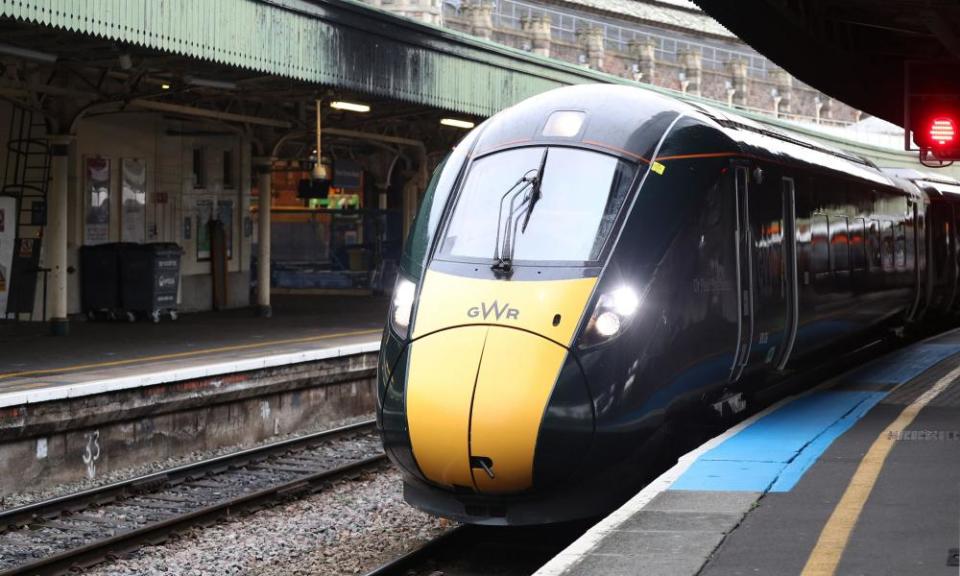Pollution on some new UK trains ‘13 times one of London’s busiest roads’

The amount of diesel pollution on some new trains is 13 times higher than on one of central London’s busiest roads, researchers found.
Passengers travelling onboard a Great Western Railway carriage running from London to Bristol, procured by the government as part of a £5.7bn scheme, were subject to huge spikes in nitrogen dioxide (NO2) pollution when it switched to diesel from electric.
NO2 levels on the two-year-old bi-mode Hitachi trains peaked at more than 13 times the average recorded on the traffic-clogged Marylebone Road in central London, according to a study by the Rail Safety and Standards Board (RSSB).
The Department for Transport (DfT) said ministers had commissioned more research after the “concerning findings”, as well as an immediate review of air quality standards and regulations for trains.
The Hitachi-built bi-modes were part of a £5.7bn government procurement of trains to run on the Great Western mainline and East Coast, with a controversial design that twinned diesel and electric power. The trains were also recently pulled out of service after cracks were discovered in the carriages.
GWR trains run on electricity from London until Cardiff, but services farther west and south-west run on diesel. Planned electrification of part of the line into south Wales, as well as the branch from Chippenham to Bath and Bristol Temple Meads, was scrapped by the then transport secretary Chris Grayling in 2017 after huge budget overruns.
Pollution increases significantly when trains are in tunnels or idling in stations, the RSSB said. Passengers on trains pulled by diesel locomotives are more exposed to fumes when sitting in rear rather than front carriages, the researchers found, possibly due to the how the exhaust is drawn into the train’s windows or air conditioning system.
The RSSB examined six types of diesel train, and found high levels of particulate pollution on older diesel trains operated by Avanti West Coast, the Super Voyager class 221 models built by Alstom.
However, the RSSB concluded: “Newer train types do not necessarily have better onboard air quality compared to older trains.” The worst NO2 pollution was found on the GWR bi-mode trains, which were just two years old.
The DfT said that the RSSB report had independently concluded that the quality of air on services remained within legal workplace limits. It said cross-industry research was already under way to understand the issues and identify solutions, while it had commissioned further studies to measure air quality on another eight types of train used in Britain.
Rail minister Chris Heaton-Harris said: “The safety of staff and passengers is our absolute priority. While these findings are within limits, I do not believe people should have to accept anything less than the highest levels of air quality.
“I have asked the industry to immediately conduct further research and explore all engineering modifications and options to rapidly improve air quality on trains and in stations.
He added: “If required, we will not hesitate to strengthen legislation to ensure the highest standards of air quality are met and maintained.”
A spokesperson for industry body the Rail Delivery Group said: “Rail is one of the greenest forms of transport … We welcome the government’s action to improve air quality onboard trains, but investment by government is also needed to electrify more of the railway and eliminate more polluting trains altogether.”
GWR said it was working with the manufacturers to help develop potential solutions. A spokesperson said: “In the long term, this is why the government’s ambition to electrify the network and reduce the number of diesel-operated trains is so important.”
An Avanti West Coast spokesperson said most of its fleet was fully electric, and it would be replacing the diesel Voyager trains with electric and bi-mode trains in coming years.

 Yahoo Finance
Yahoo Finance 